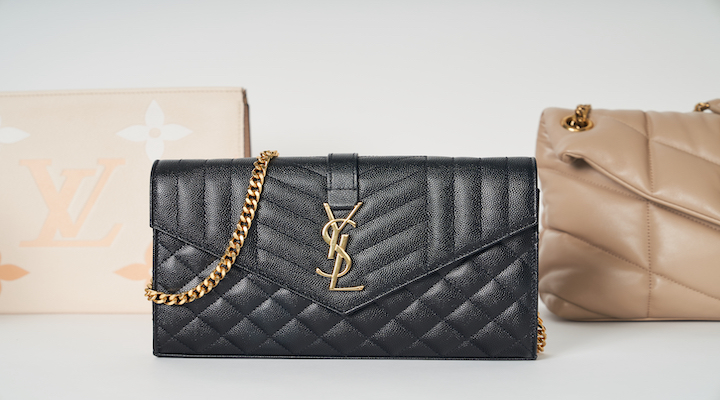After achieving success through a digital model, luxury online reseller Luxe.It. Fwd has established a number of pop-up stores across Australia to complement its e-commerce presence. This strategy has led to significant revenue growth, and could be the way forward for brands operating in a similar space, the business’ founder and CEO Miranda Gillespie told Inside Retail. According to Gillespie, the pop-up stores have contributed to a $2 million year on year revenue increase – from $3.2
3.2 million to $5.2 million – compared to the previous financial year.
The pop ups are or have been located in QVB, Chatswood and ‘The Galeries’ in Sydney, and Chadstone and Emporium in Melbourne, and enabled the brand to reach new audiences, and increase its brand awareness.
“Previously, we solely had a digital focus around Google and social media. But if someone isn’t expressly searching for us on Google, or they’re not on Instagram or don’t see our ads, then we’re potentially missing out on customers who are very relevant to our business,” she said.
Gillespie believes that the pop-up stores represented a reverse from the trend of bricks-and-mortar brands pivoting to e-commerce.
She added that the pop ups have helped to bridge the “trust gap” for customers, who might otherwise be unsure as to the quality or authenticity of the products.
“[The pop up stores] gave us the opportunity to explain to customers the benefits of reselling their luxury fashion item, and we can make a connection that you can’t always make online,” Gillespie said.
“People see you in person, and they feel a level of trust and authenticity that they don’t automatically feel online.”
A huge success
Not limited to luxury resale, Gillespie believes that pop ups can be an effective marketing and brand activation strategy for retailers across a broad range of categories.
She pointed to Luxe.It.Fwd’s sister brand, Narvi Jewellery – an e-commerce brand specialising in mid-priced, designer jewellery – which is set to open pop up stores over the next few months.
“What we’re discovering in e-commerce is that [you] can’t reach everyone easily, and it’s becoming more expensive, crowded, and competitive,” she said.
“Cutting through digitally is so much harder compared to 10-15 years ago. It makes sense to have a physical presence [as] part of the brands’ marketing strategy.”
Between December 2022 and January 2023, the pop-up across Chatswood and QVB drove between 18-28 per cent of all quote forms received.
It also bolstered the brand’s digital marketing campaign, with paid Facebook ads promoting the pop-ups accounting for 27 per cent of quote forms received in the second week of January – its highest on record.
Gillespie explained that the pop up stores were driving traffic to its website, where they can continue to browse the brand’s product range.
“Online retailers should look at how they can create a cost-effective physical retail outlet [as] they may find a lot of customers they had not previously been able to access,” she said.
Discretionary as it gets
Looking forward, Gillespie said that Luxe.It.Fwd is considering permanent stores. However, the flexibility of the pop-ups – and the brand’s ability to make changes and move locations without significant overheads – is part of its strategic appeal.
She added that the brand is “quite insulated” from the current economic environment, and isn’t likely to be significantly affected by rising cost of living pressures.
She observed that certain customers would spend on high-end products due to strong demand, and product scarcity, as the pre-owned products are one-of-a-kind.
“There’s two camps. People are either obsessed with luxury handbags. Or they think it’s the craziest thing to spend money on. But if [they] want it, that want is so high, [and] they will prioritise their money,” Gillespie said.
“Spending $2000 on a handbag is as discretionary as it gets. [But] in whatever environment, people still want to buy high-end luxury handbags.”
Regarding the brand’s future plans, Gillespie said that Luxe.It.Fwd’s base will always be as an e-commerce business.
But, it would continue to use pop ups to amplify the digital brand.
“We’ve only [implemented] this strategy for about a year. But we’re taking it to the next level, and using it as a key way to achieve growth,” she said.

